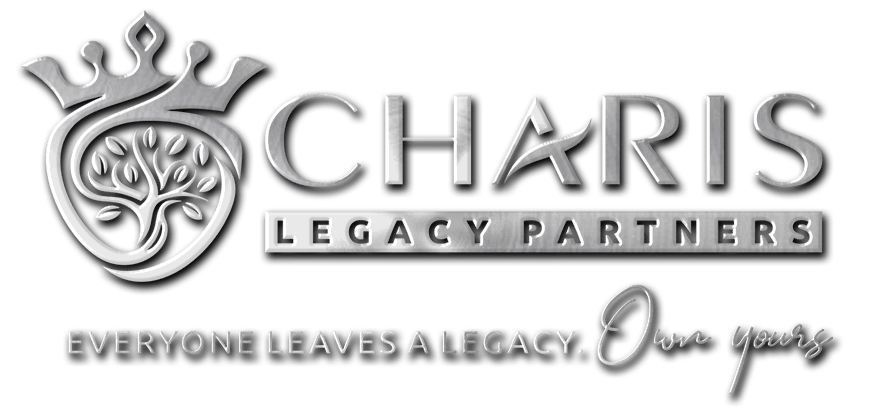The estate tax diminishes the amount you could put towards your legacy planning goals. Thankfully, strategies exist to minimize your exposure.
Every dollar of wealth surplus not paid to the IRS is one more dollar that can be used for legacy giving. Keeping that in mind, a major goal of financial planning (and especially estate planning) is minimizing exposure to transfer taxes (e.g., gift taxes assessed on transfers made during your lifetime and estate taxes assessed on post-death transfers). Thankfully, there are plenty of options for minimizing your exposure to transfer taxes, which leaves you with more money you can put towards your charitable or inheritance legacy.
Estate Tax and Gift Tax
Currently, federal transfer taxes top out at 40% of your estate above a certain combined lifetime gift/estate tax exemption threshold (known as the unified credit), and the 2017 tax reform raised this exemption amount to $11.7 million per person and $23.4 million per married couple.
Obviously, very few estates will be subject to transfer taxes at these lofty exemption amounts, so it can be tempting to think this is not applicable. However, this unified credit is constantly changing based on the party in power in Washington, and raising the unified credit was one of the more controversial elements of the 2017 tax reform among Democrats. With Democrats taking control of the presidency, Senate and House in the 2020 elections and working to pass the Build Back Better Act, this unified credit threshold is likely to be reduced significantly, and the transfer tax rates are likely to go up, exposing a much broader swath of households to these taxes.
Additionally, many states assess their own estate tax, often with much lower exemption thresholds, so this aspect of estate planning is still very much relevant. To err on the side of caution, it is generally best to assume the exemption amount is $1M, for instance, and plan accordingly to reduce the taxable estate.
The Gift Tax Exclusion and Charitable Estate Tax Deductions
An important planning opportunity for those with inheritance legacy goals is to make use of the annual gift tax exclusion. When you give a gift to someone for which you don’t expect to receive fair payment, even if you sell something to someone below market value or loan money below market interest rates, that discounted amount qualifies as a gift under federal tax law.
With the annual gift tax exclusion, you can give up to $15K per person, per year completely free of any gift tax implications (gifts to spouses are generally unlimited). This is per person, mind you, so you can give $15K each to children, sons-in-law or daughters-in-law, grandchildren, your neighbor down the street…anyone you want. If you are married, you and your spouse can combine your exclusion amounts to give a total of $30K per year. So, you can see how you can really start to whittle down your taxable estate if you are strategic about it. Any gift above this annual exclusion amount counts against your lifetime unified credit, beyond which your assets are exposed to gift and estate taxes.
Some may ask why you would want to give this money away while you’re alive and risk running out of money prematurely? Keep in mind, you’re not going to be taking this money with you, and whatever is left when you die will be passed along anyway, so the idea here is to start to give some of this money away this side of death to shrink your taxable estate. You still have to be careful to not give away too much, but careful financial planning can provide clarity on how much can be safely given away.
And furthermore, for those focused on giving much of their wealth to charitable causes, while charitable income tax deductions are limited to a percentage of your gross income, charitable estate tax deductions are unlimited. In a sense, this makes transfer taxes optional for the committed charitable legacy builder.
Strategies for Minimizing Exposure to the Estate Tax
Before we look at the strategies for minimizing exposure to transfer taxes, it is important to draw out the distinction between minimizing exposure to income taxes and minimizing exposure to transfer taxes, because whether your biggest tax reduction priority is minimizing income taxes or minimizing transfer taxes factors heavily into the decision of which legacy giving vehicle is most suitable.
At Charis Legacy Partners, our entire approach is built on increasing the legacy giving return on investment (ROI) of your wealth. While there is no one size fits all approach to legacy planning, the following are a few strategies for minimizing exposure to transfer taxes. If you’re interested in learning more about any of these strategies, I have blog posts devoted to diving deeper into each of these strategies.
Irrevocable Trusts
Irrevocable trust arrangements (meaning assets placed into the trust are final and cannot be reversed), including private foundations, are one of the best options for those at high enough wealth levels. I say “high enough wealth levels” because the downside with any irrevocable trust is the attorney fees to create the trust and the trustee fees for ongoing administration of the trust (unless you will be serving as trustee yourself, which is certainly an option), so the trust funding levels must be high enough to justify these costs.
Employer Charitable Matching Programs
Employer charitable matching programs, which many large employers have now begun to offer, is a fantastic opportunity for all of us with charitable legacy goals to increase the legacy giving return on investment (ROI) of our wealth. You get the same tax benefits of typical charitable giving, but with an increased amount going to the charity of your choosing.
Gifting Appreciated Securities
By donating stock that has appreciated from your taxable brokerage account instead of gifting cash, you get a double tax benefit: you get the charitable deduction on the full amount gifted to charity and avoid ever having to pay taxes on the gains.
One caveat here is that the tax deduction limit for gifts of appreciated property is only 30% of adjusted gross income (AGI), while for cash gifts it is 60% of AGI (with both allowing a five-year carryforward for any unused deduction), meaning you can gift a higher amount in cash and still get the full tax benefit. However, if you’re planning on gifting less than 30% of your gross income each year anyway, appreciated assets may be the way to go.
Charitable Bunching with Donor Advised Funds
Charitable bunching is when you make several years’ worth of charitable gifts in one year, to get the full itemized deductions, and then just take the standard deduction in the other years. Charitable bunching is an excellent strategy to employ with a Donor Advised Fund (DAF), which is an account specifically created for charitable giving.
A DAF simplifies charitable bunching, because you can make your multi-year gifts into the DAF (and get the full upfront tax deduction for the entire multi-year gift), and then distribute the cash to charity over the ensuing years.
Qualified Charitable Distributions
Qualified Charitable Distributions (QCDs) are made from pre-tax (i.e. Traditional and Rollover) Individual Retirement Accounts (IRAs). Essentially, what this means is you are taking money that has never been taxed, growing it tax-deferred, then giving that compounded growth to charity, at which point you get another tax-deduction, thereby avoiding taxation on those distributions.
The Takeaway
A key component any of us with financial legacy goals must consider is how we go about transferring our wealth surplus to charitable causes and heirs. Strategically handling this transfer provides us with opportunities to minimize our exposure to transfer taxes, leaving us with more money that we can use to provide for charitable causes and heirs.
To further discuss these or any other legacy planning strategies, please schedule a free consultation using the button in the navigation menu.

